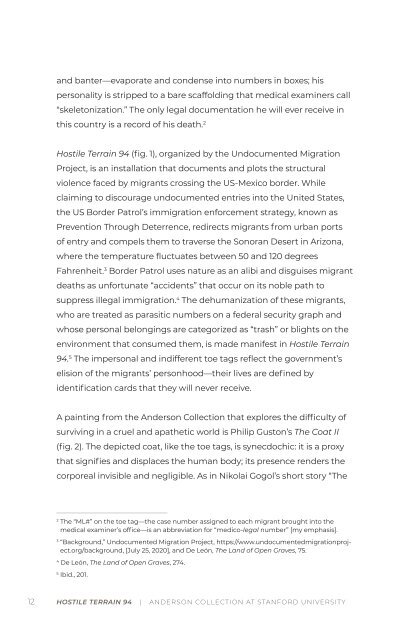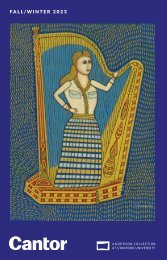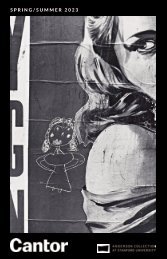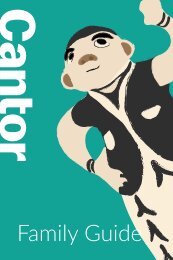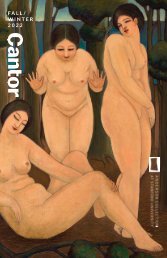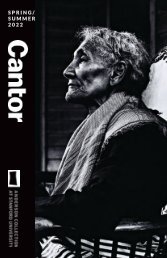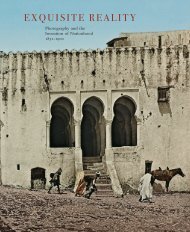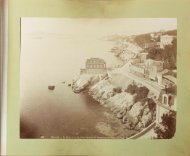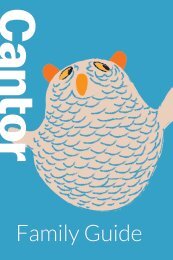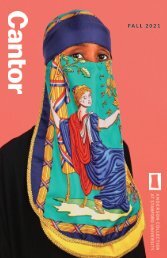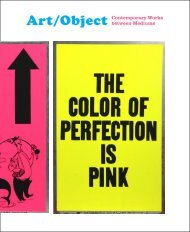Hostile Terrain 94
Hostile Terrain 94 is a participatory art project sponsored and organized by the Undocumented Migration Project. The installation is composed of more than 3,200 hand-written toe tags filled out by the community, each representing a migrant who has died trying to cross the US-Mexico border at the Sonoran Desert of Arizona between the mid-1990s and 2019. The exhibition is installed on the first floor and the accompanying publication was written by both graduate and undergraduate students at Stanford University.
Hostile Terrain 94 is a participatory art project sponsored and organized by the Undocumented Migration Project. The installation is composed of more than 3,200 hand-written toe tags filled out by the community, each representing a migrant who has died trying to cross the US-Mexico border at the Sonoran Desert of Arizona between the mid-1990s and 2019. The exhibition is installed on the first floor and the accompanying publication was written by both graduate and undergraduate students at Stanford University.
Create successful ePaper yourself
Turn your PDF publications into a flip-book with our unique Google optimized e-Paper software.
and banter––evaporate and condense into numbers in boxes; his<br />
personality is stripped to a bare scaffolding that medical examiners call<br />
“skeletonization.” The only legal documentation he will ever receive in<br />
this country is a record of his death. 2<br />
<strong>Hostile</strong> <strong>Terrain</strong> <strong>94</strong> (fig. 1), organized by the Undocumented Migration<br />
Project, is an installation that documents and plots the structural<br />
violence faced by migrants crossing the US-Mexico border. While<br />
claiming to discourage undocumented entries into the United States,<br />
the US Border Patrol’s immigration enforcement strategy, known as<br />
Prevention Through Deterrence, redirects migrants from urban ports<br />
of entry and compels them to traverse the Sonoran Desert in Arizona,<br />
where the temperature fluctuates between 50 and 120 degrees<br />
Fahrenheit. 3 Border Patrol uses nature as an alibi and disguises migrant<br />
deaths as unfortunate “accidents” that occur on its noble path to<br />
suppress illegal immigration. 4 The dehumanization of these migrants,<br />
who are treated as parasitic numbers on a federal security graph and<br />
whose personal belongings are categorized as “trash” or blights on the<br />
environment that consumed them, is made manifest in <strong>Hostile</strong> <strong>Terrain</strong><br />
<strong>94</strong>. 5 The impersonal and indifferent toe tags reflect the government’s<br />
elision of the migrants’ personhood––their lives are defined by<br />
identification cards that they will never receive.<br />
Overcoat,” a likely source of inspiration for Guston’s painting, the value of<br />
human life is absorbed by an object. 6<br />
The clerk in Gogol’s story, Akaky Akakievich, is treated by others<br />
according to the condition of his coat. When he wears a “rust- and<br />
mud-colored” coat that is stained with rubbish—akin to the one painted<br />
by Guston—he is ridiculed and overlooked. 7 Similarly, as migrants are<br />
measured by their lack of legal status and their gritty belongings in the<br />
desert, their erasures––sanitation by another name––seem justified.<br />
A painting from the Anderson Collection that explores the difficulty of<br />
surviving in a cruel and apathetic world is Philip Guston’s The Coat II<br />
(fig. 2). The depicted coat, like the toe tags, is synecdochic: it is a proxy<br />
that signifies and displaces the human body; its presence renders the<br />
corporeal invisible and negligible. As in Nikolai Gogol’s short story “The<br />
Figure 2. Philip Guston, The Coat II, 1977, oil on canvas, 69 1⁄8 x 92 1⁄8 in., Anderson<br />
Collection at Stanford University, Gift of Harry W. and Mary Margaret Anderson, and Mary<br />
Patricia Anderson Pence, 2014.1.047. © The Estate of Philip Guston, courtesy Hauser &<br />
Wirth. Photo: M. Lee Fatheree.<br />
____________________________________________________<br />
2<br />
The “ML#” on the toe tag—the case number assigned to each migrant brought into the<br />
medical examiner’s office—is an abbreviation for “medico-legal number” [my emphasis].<br />
3<br />
“Background,” Undocumented Migration Project, https://www.undocumentedmigrationproject.org/background,<br />
[July 25, 2020], and De León, The Land of Open Graves, 75.<br />
4<br />
De León, The Land of Open Graves, 274.<br />
5<br />
Ibid., 201.<br />
Both <strong>Hostile</strong> <strong>Terrain</strong> <strong>94</strong> and The Coat II document the hostility of their<br />
respective societies. Guston considers the primary function of art as<br />
____________________________________________________<br />
6<br />
Magdalena Dabrowski, The Drawings of Philip Guston (New York: The Museum of Modern Art,<br />
1988), 14.<br />
7<br />
Nikolai Gogol, The Overcoat (London: Merlin Press, 1956), 12.<br />
12 HOSTILE TERRAIN <strong>94</strong> | ANDERSON COLLECTION AT STANFORD UNIVERSITY HOSTILE TERRAIN <strong>94</strong> | ANDERSON COLLECTION AT STANFORD UNIVERSITY 13


